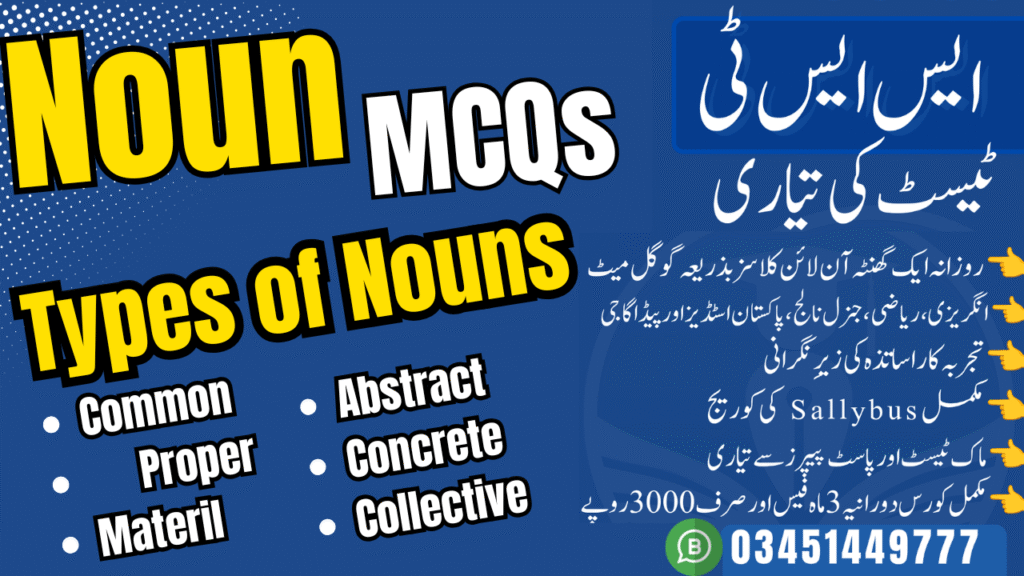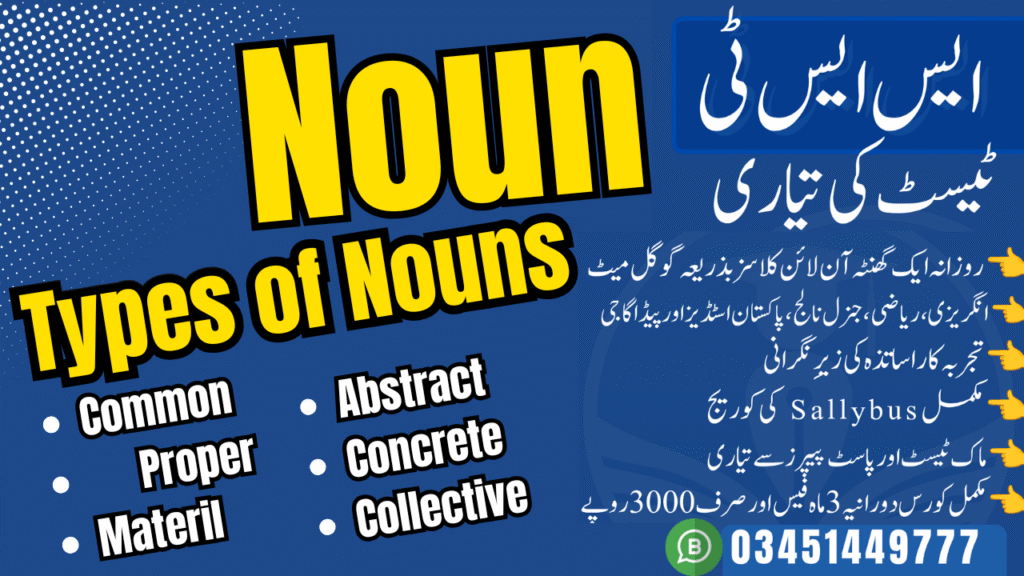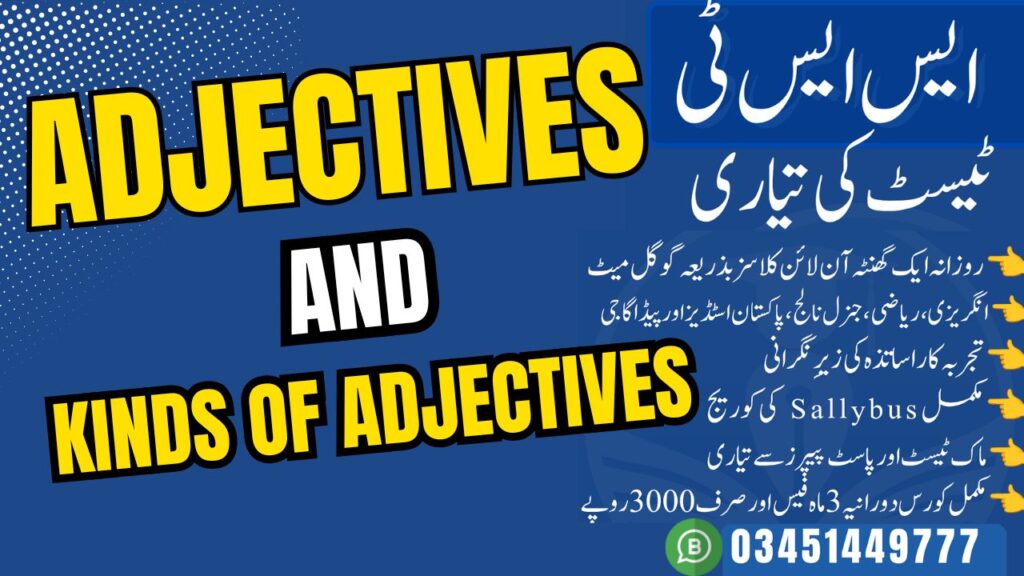Part I: What is Future Continuous Tense
1. Introduction
Imagine someone says to you, “This time tomorrow, I will be traveling to London”. This sentence does more than just state a future plan; it paints a vivid picture. It invites you to step into a specific moment in the future and witness an action in full swing. You can almost see the person on a train, watching the countryside blur past, or settling into their seat on an airplane. This is the power of the Future Continuous tense—a grammatical tool that transforms a simple statement about the future into a dynamic, ongoing experience.
The Future Continuous, also known as the Future Progressive, is a cornerstone of advanced English grammar. Its primary role is to describe actions that will be in progress at a particular point in the future. While simpler future forms state what will happen, the Future Continuous tells us what will be happening. This shift in perspective is crucial. It moves communication beyond a series of static future events into a more fluid and descriptive realm, allowing for greater precision and clarity.
Understanding this tense is essential for anyone serious about achieving fluency. For students preparing for IELTS, TOEFL, GRE, or SAT, it is a non-negotiable skill. Correctly using the Future Continuous demonstrates a sophisticated command of grammatical range and accuracy, which is a key scoring criterion in both speaking and writing sections.
It is indispensable in academic writing for describing future processes, in storytelling for setting a scene, and in daily conversation for making polite inquiries and discussing plans with nuance. This guide will provide an exhaustive exploration of the Future Continuous tense, from its fundamental structure to its most subtle applications, equipping learners and educators with the knowledge to use it with confidence and precision.
Future Continuous Tense Test (20 MCQs)
By Arshad Yousafzai for all test Preparation
ZONE OF EDUCATION- Consultants & Academy
Address: Office No. 35 & 37, Sultan Tower, Makanbagh, Mingora, Swat, Khyber Pakhtunkhwa, Pakistan
Contact: 📞 0946-712777 | 📱 0341-4497777 | 📱 0301-1449777
Email: info@zoneofeducation.com
Website: https://zoneofeducation.com
Time Limit: 60 Seconds per Question.
Question 1 of 20
Score: 0
Test Complete!
You scored out of 20 questions correctly.
2. Definition of Future Continuous Tense
The Future Continuous tense is used to talk about an unfinished action that will be in progress at a specific time in the future. It focuses on the duration of an activity, highlighting that it will have started before a certain future moment and will likely continue after it.
Think of it this way: Imagine you have a special camera that can show you a live video feed from the future. If you tune into the feed for 8:00 p.m. tomorrow, what will you see? You might see that your friend will be watching a movie. The movie didn’t start at exactly 8:00 p.m., and it won’t finish at that precise moment either. The Future Continuous tense captures this action in the middle—it shows the activity as an ongoing process at that specific future point.
Ongoing Action at a Specific Future Time
The definition of the Future Continuous tense rests on two fundamental components:
- An Ongoing Action: The “continuous” or “progressive” aspect signifies that the action has duration and is not instantaneous. The verb will be in its -ing form (the present participle) to show this progression.
- A Specific Future Time: The action is anchored to a particular moment or period in the future. This anchor point can be a specific time on the clock, another future event, or a general future context.
For example, in the sentence, “At midnight, we will be driving through the desert,” the specific time is “at midnight,” and the ongoing action is “driving”. We are not starting to drive at midnight; we are already in the process of driving at that moment.
Contrast with Future Simple
The most common point of confusion for learners is the difference between the Future Continuous and the Future Simple. The distinction lies in the perspective and focus of the speaker.
- Future Simple (will + verb): This tense typically describes a future action as a complete, single event. It is often used for spontaneous decisions, predictions, promises, or facts about the future.
- Future Continuous (will + be + verb-ing): This tense describes an action as an ongoing process at a future point. It focuses on the duration and the experience of the action, not its completion.
Consider this classic comparison:
- “At 6 p.m., I will eat dinner.” This suggests that the act of eating will begin at 6 p.m. It is a complete event scheduled for that time.
- “At 6 p.m., I will be eating dinner.” This implies that at 6 p.m., I will already be in the middle of my meal. I started eating before 6 p.m. and will likely finish after.
The Future Simple views the future event as a single point on a timeline, whereas the Future Continuous views it as a segment of time, inviting the listener to look at what is happening inside that segment.
To better illustrate this, the following timeline provides a visual comparison of how different future tenses represent time.
Visualizing Future Tenses: A Timeline Comparison
This timeline represents the flow of time from the present into the future.
Future Simple
Example: “I will call you.”
The “X” marks a single, completed action at some point in the future.
Future Continuous
Example: “At 8 p.m., I will be watching TV.”
The vertical line at 8 p.m. intersects the ongoing action, showing it’s in progress at that specific time.
Summary Mind Map
Future Simple: One-time future action.
Future Continuous: Ongoing action at a specific future time.
This visual representation makes the abstract concepts of tense and aspect more concrete. It clarifies that the Future Continuous is uniquely suited for describing the duration and “in-progress” nature of future events, a function that other tenses do not perform in the same way.
3. Importance of Future Continuous Tense
While it might seem like a niche grammatical point, the Future Continuous tense is a powerful tool that significantly enhances the quality and sophistication of one’s English. Its importance extends across casual conversation, professional communication, and academic performance.
Adds Precision, Fluency, and Clarity
Using the Future Continuous allows a speaker or writer to be remarkably specific about future plans and events. It adds a layer of detail that eliminates ambiguity and makes communication more effective and vivid. For language learners, moving from exclusively using the Future Simple to incorporating the Future Continuous is a significant step towards greater fluency. It demonstrates a higher command of the language’s nuances and helps one sound more natural and articulate. Instead of just listing future events, you can describe a future scene, which is a far more engaging and clear way to communicate.
Widely Used in Speaking & Writing Tasks
In the context of standardized English proficiency tests, the Future Continuous is not just useful; it is often essential for achieving a high score. Examiners for tests like IELTS and TOEFL are trained to look for “grammatical range and accuracy.” Relying solely on simple tenses will limit a candidate’s score. Correctly using the Future Continuous, candidates prove they can handle more complex structures to express nuanced ideas.
In an IELTS Speaking test, an examiner might ask, “What do you think you will be doing in five years’ time?”
- A basic answer (Future Simple): “I will work as an engineer.”
- A high-scoring answer (Future Continuous): “In five years, I hope I will be working as a senior engineer at a leading tech company, where I will be managing exciting new projects.”
The second answer is more dynamic, descriptive, and demonstrates a superior grasp of English grammar.
Helps in Expressing Planned or Expected Ongoing Actions
The Future Continuous often carries an underlying implication that an action is already planned, part of a routine, or a confirmed event. This adds a layer of certainty and intentionality to the statement. Saying, “Don’t call me around 9 p.m., I’ll be planning for the next day’s class,” frames the action not as a spontaneous decision but as a regular, non-negotiable part of a schedule.
This function has a subtle but important social and psychological effect. It signals to the listener that a plan is firm. When declining an invitation, for example, saying “Sorry, I can’t. I’ll be working all day,” sounds more definitive and less like a freshly made excuse than “Sorry, I can’t. I will work all day.” The former suggests a pre-existing commitment, while the latter could be interpreted as a new decision. This ability to manage social expectations through grammatical choice is a hallmark of an advanced language user.
4. Terminology
When studying English grammar, you will encounter two different names for this tense, which can sometimes cause confusion. However, the distinction is purely terminological, with no difference in meaning or function.
Future Continuous vs. Future Progressive — Interchangeable Terms
The terms Future Continuous and Future Progressive refer to the exact same grammatical structure (will + be + verb-ing) and are completely interchangeable. Both names accurately describe the tense’s function:
- Continuous emphasizes that the action has duration and is ongoing.
- Progressive emphasizes that the action is in progress at a specific future moment.
Students and teachers can use whichever term they prefer or are more familiar with; both are correct and universally understood.
Preference in British vs. American English
While both terms are understood globally, there is a slight regional preference in their usage in educational materials.
- British English resources, such as those from the British Council, Cambridge University Press, and Oxford University Press, tend to favor the term Future Continuous.
- American English resources, including grammar guides like the Purdue OWL, often use the term Future Progressive.
This is merely a convention and should not be a source of concern for learners. Whether you call it Future Continuous or Future Progressive, you are talking about the same powerful tool for describing the future.
Part II: Structure and Function
5. Form & Structure
The grammatical structure of the Future Continuous tense is remarkably consistent and straightforward, making it one of the easier tenses to memorize from a structural standpoint. The key is to remember its three core components: the modal auxiliary will, the auxiliary verb be, and the present participle of the main verb.
The Formula
The fundamental formula for the Future Continuous tense is:
Subject + will + be + Present Participle (verb + -ing)
A crucial feature of this tense is that the auxiliary verbs will remain unchanged regardless of the subject. Unlike the Simple Present tense (e.g., I work vs. she works), there is no need to conjugate the verbs for different persons or numbers. This consistency simplifies its application significantly.
Sentence Types: Affirmative, Negative, and Interrogative
Let’s break down the structure for all sentence types, using the verb “study” as an example.
- Affirmative (Positive) Sentences: These are statements of fact. The structure follows the core formula directly.
- Example: She will be studying at 9 p.m. tonight.
- Negative Sentences: To make the sentence negative, we add not between will and be.
- Structure: Subject + will not + be + Present Participle (-ing).
- Example: She will not be studying at 9 p.m. tonight.
- Interrogative (Question) Sentences: To form a question, we invert the subject and the first auxiliary verb, will.
- Yes/No Questions:
- Structure: Will + Subject + be + Present Participle (-ing)?
- Example: Will she be studying at 9 p.m. tonight?.
- Wh- Questions (what, where, when, why, who, how): The question word comes before will.
- Structure: Wh- Word + will + Subject + be + Present Participle (-ing)?
- Example: What will she be doing at 9 p.m. tonight?.
Contractions in Speech and Informal Writing
In everyday spoken English and informal writing, contractions are very common and essential for sounding natural and fluent.
- Affirmative Contractions: The subject and will are contracted.
- I will → I’ll (I’ll be working)
- You will → You’ll (You’ll be working)
- He/She/It will → He’ll/She’ll/It’ll (He’ll be working)
- We will → We’ll (We’ll be working)
- They will → They’ll (They’ll be working)
- Negative Contractions: will and not are contracted to won’t. This form is used for all subjects.
- I will not → I won’t (I won’t be working)
- You will not → You won’t (You won’t be working)
The be going to Variation
In addition to the will form, the Future Continuous can also be constructed using be going to. This alternative form is particularly common in informal speech and is generally interchangeable with the will form with little or no change in meaning.
- Formula: Subject + am/is/are + going to be + Present Participle (-ing).
- Example: “Tonight at 6 p.m., I am going to be eating dinner”.
- Example: “When I arrive, they are going to be celebrating“.
The following table provides a comprehensive, at-a-glance reference for the structure of the Future Continuous tense with will for all subjects and sentence types.
| Future Continuous Tense: Full Structural Breakdown (Verb: work) |
| Subject |
| I |
| You |
| He/She/It |
| We |
| They |
This table serves as a clear and simple tool for learners, reinforcing the consistent pattern of the tense and providing a quick reference for constructing sentences correctly.
6. Functional Uses of Future Continuous
The true mastery of the Future Continuous tense comes from understanding its various functions in communication. While it has several distinct uses, they all logically stem from its core meaning of an “ongoing future action.” By grasping this central concept, learners can intuitively apply the tense in diverse contexts rather than memorizing a list of separate rules.
Use 1: Actions in Progress at a Specific Future Time
This is the most fundamental and widely recognized use of the tense. It describes an action that will be happening at a precise moment in the future. The action is framed as being unfinished at that point.
- “This time next week, I’ll be sun-bathing in Bali”.
- “At 10 p.m. tonight, she will be sleeping“.
- “Try to call before 8 o’clock. After that, we’ll be watching the match”.
Use 2: Interrupted Future Actions
This function describes a longer, ongoing future action that is interrupted by a shorter, specific action. The Future Continuous is used for the longer background action, while the Simple Present is used for the shorter interrupting action, which is typically introduced by a time clause like when or while.
- “I will be watching TV when she arrives tonight”.
- “He will be studying at the library when you call him.”
- “They will be having dinner when the guests get there.”
Use 3: Planned or Arranged Future Activities
The tense is frequently used to talk about future events that are already planned, scheduled, or part of a routine. It conveys a sense of certainty and pre-arrangement, suggesting the event is not a spontaneous decision.
- “I’ll be seeing Jim at the conference next week”. (This implies the meeting is already expected or arranged).
- “We’ll be leaving at 10 o’clock, so don’t be late”. (This is a reminder of a fixed plan).
- “Next week they will be flying to Australia”.
Use 4: Polite Inquiries About Plans
This is a key pragmatic function that demonstrates social awareness. Using the Future Continuous to ask about someone’s plans is softer, more indirect, and more polite than using a more direct form like be going to. The question “Will you be joining us?” gently inquires about pre-existing plans without pressuring the person to make a decision on the spot. This politeness arises because you are asking about an action that may already be “in progress” in their schedule, rather than asking them to initiate a new action for you.
- “Will you be bringing your friend to the pub tonight?”.
- “Will you be needing a ride to the airport?”
- “Will she be going to the party tonight?”.
Use 5: Setting a Scene or Describing in the Future
Just as the Past Continuous can set a scene in a story (“The sun was shining, the birds were singing…”), the Future Continuous can be used to paint a picture of a future moment by describing multiple parallel actions happening simultaneously.
- “When I walk into the office party, the atmosphere will be electric. My boss will be giving a speech, some colleagues will be dancing, and others will be networking by the bar.”
- “Imagine the festival next year! People will be singing along to their favorite bands, food vendors will be selling delicious treats, and everyone will be having a wonderful time.”
Use 6: Predicting or Guessing About Present or Future Actions
The tense can be used to make a prediction or an assumption about an action that is likely in progress now or will be in the future. It often reflects the speaker’s mental projection of a scene.
- “Don’t phone her now; she’ll be putting the baby to bed.” (A prediction about the present).
- “He’ll be coming to the meeting, I expect”. (A prediction about the future).
- “I guess you’ll be feeling thirsty after all that exercise”. (A logical assumption about a future state).
Use 7: Actions Continuing into the Future (with still)
When combined with the adverb still, the Future Continuous emphasizes that an action happening now is expected to continue for some time into the future.
- “In an hour, I’ll still be ironing my clothes”.
- “Tomorrow he’ll still be suffering from his cold”.
- “Unfortunately, sea levels will still be rising in 20 years”.
7. Time Expressions Commonly Used
To anchor the ongoing future action, the Future Continuous tense is frequently paired with specific time expressions. Recognizing these signal words can help learners identify when to use the tense.
- Specific Points in Time: These pinpoint the exact moment when the action will be in progress.
- at this time tomorrow/next week/next month/next year
- at 5 p.m. tomorrow
- at midnight tonight
- by Christmas
- Clauses of Time: These use another event (in the Simple Present) as the time marker.
- when you arrive
- while I’m at work
- before she leaves
- after the meeting starts
- General Future Periods: These provide a broader future context.
- soon
- next week/month/year
- in the future
- tomorrow evening
- Durational Phrases: These specify the length of the ongoing action.
- from dusk until dawn
- all day/all night
- for the next few hours
- from 9 a.m. to 12 p.m.
- Phrases of Expectation: These often accompany predictions.
- I expect
- I guess
- I imagine
- probably
8. Rules & Patterns
While the Future Continuous is versatile, its use is governed by a few important rules and patterns. Understanding these will prevent common mistakes and ensure grammatical accuracy.
Same Structure for All Subjects
As highlighted in the “Form & Structure” section, one of the simplest rules is its consistency. The core structure will be + verb-ing does not change, regardless of whether the subject is singular or plural, or first, second, or third person. This makes it much easier to learn than tenses that require verb conjugation.
The Stative Verb Restriction
This is the most critical grammatical rule associated with all continuous tenses, including the Future Continuous. Continuous tenses are used to describe actions, processes, and dynamic events. They are generally not used with stative verbs (also called non-action verbs), which describe states of being, feelings, thoughts, senses, and possession. These states do not have a clear beginning or end and are not seen as actions in progress.
Here is a categorized list of common stative verbs:
- Feelings/Emotions: love, hate, like, dislike, prefer, want, wish, need
- Thoughts/Opinions: know, believe, understand, remember, forget, think (meaning ‘believe’), recognize, seem
- Senses (involuntary): see, hear, smell, taste, feel
- Possession: have, own, possess, belong
- Other States: be, exist, cost, weigh, consist of, contain
Incorrect vs. Correct Usage:
- Incorrect: By next year, I will be knowing a lot about quantum physics.
- Correct: By next year, I will know a lot about quantum physics.
- Incorrect: This vacation is going to be costing a lot of money.
- Correct: This vacation is going to cost a lot of money.
An Exception for Politeness
There is a specific, advanced exception to the stative verb rule. In the context of making very polite or tentative inquiries, some stative verbs like want or need can be used in the continuous form. This usage makes the question sound less direct and demanding.
- Example: “Will you be wanting dinner when you get home?” (This is a softer way of asking, “Do you want dinner?”).
- Example: “Will you be needing anything else from the shop?”
Combining with Time Clauses
A firm pattern emerges when the Future Continuous is used with a time clause (e.g., starting with when, while, before, after, as soon as). The Future Continuous tense appears in the main clause, while the time clause uses the Simple Present or Present Continuous. The future tense is never used in the time clause itself.
- Formula: [Main Clause: Future Continuous] + time word + “
- Example: “He will be studying (main clause) when she arrives (time clause)”.
- Example: “While I am finishing my homework (time clause), she is going to be making dinner (main clause)”.
9. Common Errors & How to Avoid Them
Even with its simple structure, learners can fall into a few common traps when using the Future Continuous. Being aware of these errors is the first step to avoiding them.
Error 1: Mixing Up with Future Simple
This is the most frequent conceptual error. Learners often use the Future Continuous for a single, completed future action when the Future Simple is required.
- Mistake: “I will be finishing my report tomorrow.” (This incorrectly implies that the act of finishing will be an ongoing process).
- Correction: “I will finish my report tomorrow.”
- How to Avoid: Before using the tense, ask yourself: Am I talking about the entire action from start to finish (Future Simple), or am I focusing on what will be happening in the middle of the action at a specific time (Future Continuous)?
Error 2: Incorrect Auxiliary Placement or Form
Mistakes with the auxiliary verbs will and be are common structural errors.
- Mistake: “She will been working all day.” or “They will is working.”
- Correction: “She will be working all day.”
- How to Avoid: Memorize the unchangeable formula: will + be + -ing. The verb be is always in its base (bare infinitive) form after will. It never changes to is, am, are, was, were, or been.
Error 3: Using with Stative Verbs Incorrectly
As discussed, applying the continuous form to stative verbs is a major grammatical error.
- Mistake: “Next week, she will be owning a new car.”
- Correction: “Next week, she will own a new car.”
- How to Avoid: Familiarize yourself with the list of common stative verbs. If a verb describes a state of being, thought, or possession rather than a dynamic action, default to the Future Simple.
Error 4: Forgetting the Progressive -ing Form
Sometimes, learners remember will be but forget to add the -ing suffix to the main verb.
- Mistake: “This time tomorrow, I will be travel to Paris.”
- Correction: “This time tomorrow, I will be traveling to Paris.”
- How to Avoid: The names “Continuous” and “Progressive” are your constant reminders. These tenses always require the present participle (-ing) form of the main verb.
Part III: Advanced Application
10. Comparison with Other Tenses
Choosing the correct future form is a challenge for many learners because English uses several structures to talk about the future, each with its own nuance. A direct comparison can clarify when to use the Future Continuous over other common future tenses.
Future Continuous vs. Future Simple
- Focus: The Future Continuous focuses on the progress or duration of an action at a future point. The Future Simple focuses on the completion of an action or a future fact/decision.
- Certainty: The Future Continuous often implies a pre-arranged plan or a higher degree of certainty, as the event is seen as part of an established schedule. The Future Simple can be used for spontaneous decisions made at the moment of speaking.
- Example:
- Future Continuous: “I’ll be helping my neighbor move next Saturday.” (This sounds like a confirmed arrangement).
- Future Simple: “Your bags look heavy. I’ll help you.” (This is a spontaneous offer).
Future Continuous vs. Future Perfect
- Focus: The Future Continuous describes an action that will be ongoing and unfinished at a future time. The Future Perfect (will have + past participle) describes an action that will be completed and finished by a future time.
- Timeline: The Future Continuous looks at a moment during an action. The Future Perfect looks back from a future point at an action that is already in the past from that perspective.
- Example:
- Future Continuous: “At 8 p.m., I will be writing the report.” (At 8 p.m., I will be in the middle of the writing process).
- Future Perfect: “By 8 p.m., I will have written the report.” (At 8 p.m., the report will be complete).
Future Continuous vs. Present Continuous (for future meaning)
- Focus: Both tenses can be used to talk about fixed future arrangements, especially in the near future.
- Nuance: The Present Continuous (“I am meeting Jane at 8″) is typically used for definite, personal arrangements that feel like appointments in a diary. It is very common for social plans. The Future Continuous (“I’ll be meeting Jane at 8″) can also be used for arrangements, but its scope is broader. It can also be used for predictions, polite inquiries, and describing atmosphere, whereas the Present Continuous is generally restricted to fixed plans.
- Example:
- Present Continuous: “We are having a party next Saturday.” (A definite, organized plan).
- Future Continuous: “We’ll be having a party next Saturday, so the house will be noisy.” (Describes the ongoing event as part of a larger future scene).
| Choosing the Right Future Form: A Comparative Guide |
| Tense |
| Future Simple |
| Future Continuous |
| Future Perfect |
| Present Continuous |
11. Examples & Practice
Theory is best understood through practice. This section provides extensive examples and exercises to help solidify your understanding of the Future Continuous tense.
50+ Example Sentences
Affirmative Sentences
- This time tomorrow, I’ll be flying to Rome.
- At 10 a.m. next Monday, she will be giving a presentation.
- They’ll be celebrating their anniversary all weekend.
- He will be working on the new project when you arrive.
- We will be driving through the mountains at sunset.
- You’ll be feeling much better after a good night’s sleep.
- The team will be practicing for the championship game.
- I’ll be waiting for you at the station entrance.
- At this time next year, we’ll be living in a new city.
- The chef will be preparing a special menu for the event.
- He’ll still be sleeping at 11 a.m. on Saturday.
- The children will be playing in the garden when their father gets home.
- I’ll be thinking of you during my trip.
- She will be studying medicine in London next term.
- They will be building a new bridge over the river.
- We’ll be watching the fireworks from our balcony.
- The sun will be setting as we finish our hike.
- You’ll be learning so much during your internship.
- The band will be performing their new songs at the concert.
- I will be taking my final exams this time next month.
Negative Sentences
21. I won’t be attending the meeting tomorrow afternoon.
22. She will not be working when you call her.
23. They won’t be staying at this hotel for very long.
24. He won’t be using his car, so you can borrow it.
25. We will not be having dinner until 9 p.m.
26. You won’t be feeling any pain after the medication kicks in.
27. The store won’t be opening until 10 a.m.
28. I won’t be checking my emails while I’m on vacation.
29. He will not be playing in the match due to his injury.
30. We won’t be making a decision until we have all the facts.
31. They won’t be living here anymore next year.
32. She won’t be wearing that dress to the wedding.
33. I will not be waiting for more than ten minutes.
34. The construction workers won’t be making noise after 6 p.m.
35. You won’t be needing a heavy coat; the weather will be warm.
Interrogative Sentences
36. Will you be joining us for lunch?
37. What time will she be arriving tomorrow?
38. Will they be watching the movie with us tonight?
39. Where will you be staying when you visit Paris?
40. Will he be bringing his guitar to the party?
41. Why will the road be closing so early?
42. Will we be sitting together on the plane?
43. What will you be doing at 3 p.m. on Friday?
44. Will I be sharing a room with anyone?
45. How long will you be staying in Canada?
46. Will she be taking the train or the bus?
47. What will the professor be discussing in the next lecture?
48. Will the kids be sleeping when we get back?
49. Who will be managing the store while the boss is away?
50. Will you be needing any help with your luggage?
Future Continuous Tense Test No. 3 (100 MCQs)
By Arshad Yousafzai for all test Preparation
ZONE OF EDUCATION- Consultants & Academy
Address: Office No. 35 & 37, Sultan Tower, Makanbagh, Mingora, Swat, Khyber Pakhtunkhwa, Pakistan
Contact: 📞 0946-712777 | 📱 0341-4497777 | 📱 0301-1449777
Email: info@zoneofeducation.com
Website: https://zoneofeducation.com
🎯 Services:
- Study Abroad & Visa Consultancy (All European Countries, UK, USA, Canada, Australia)
- IELTS, PTE, TOEFL, Duolingo Test Preparation
- Research Proposal, Thesis, and SOP Writing Assistance
- GRE, GMAT, GAT, ETEA, HEC-ETS Test Preparation
Time Limit: 60 Seconds per Question.
Question 1 of 100
Score: 0
Test Complete!
You scored out of 100 questions correctly.







